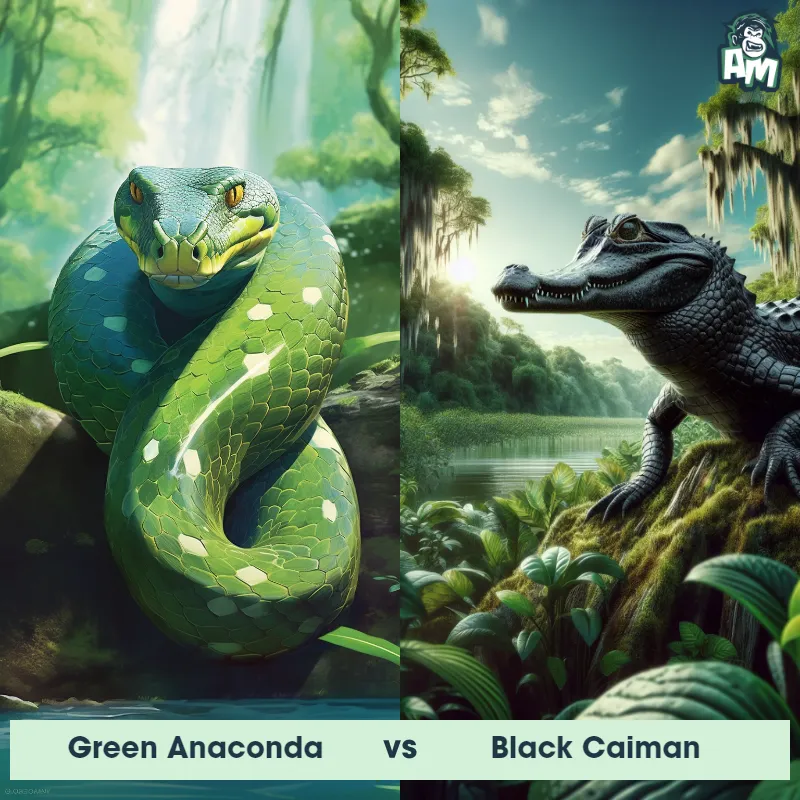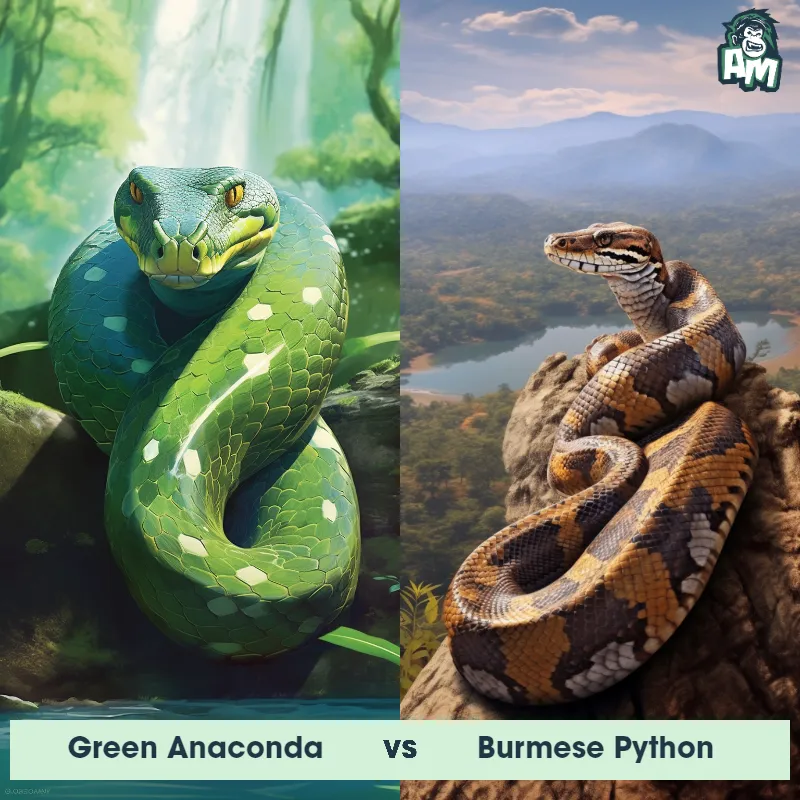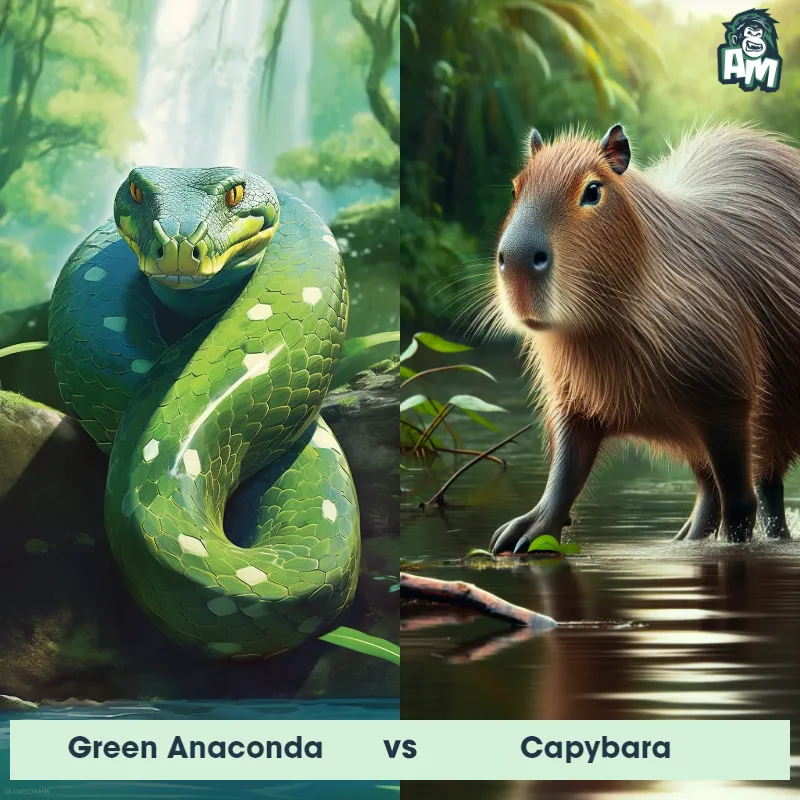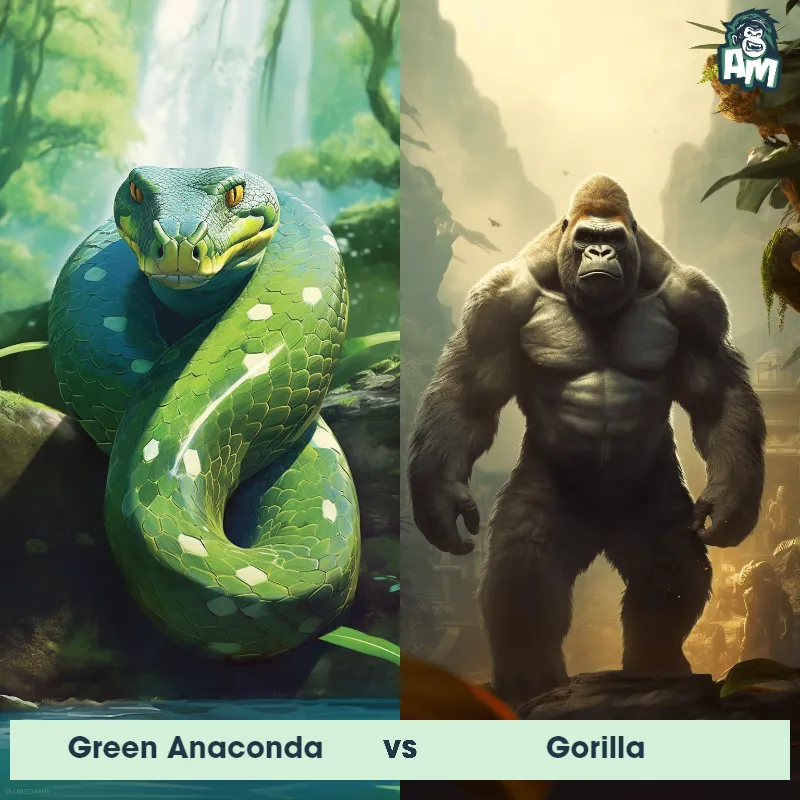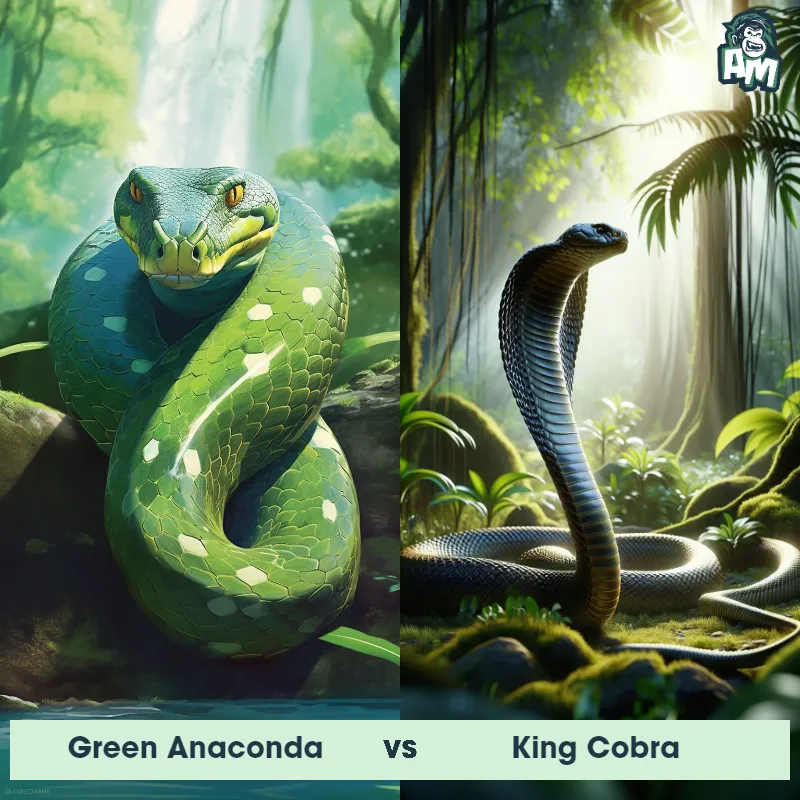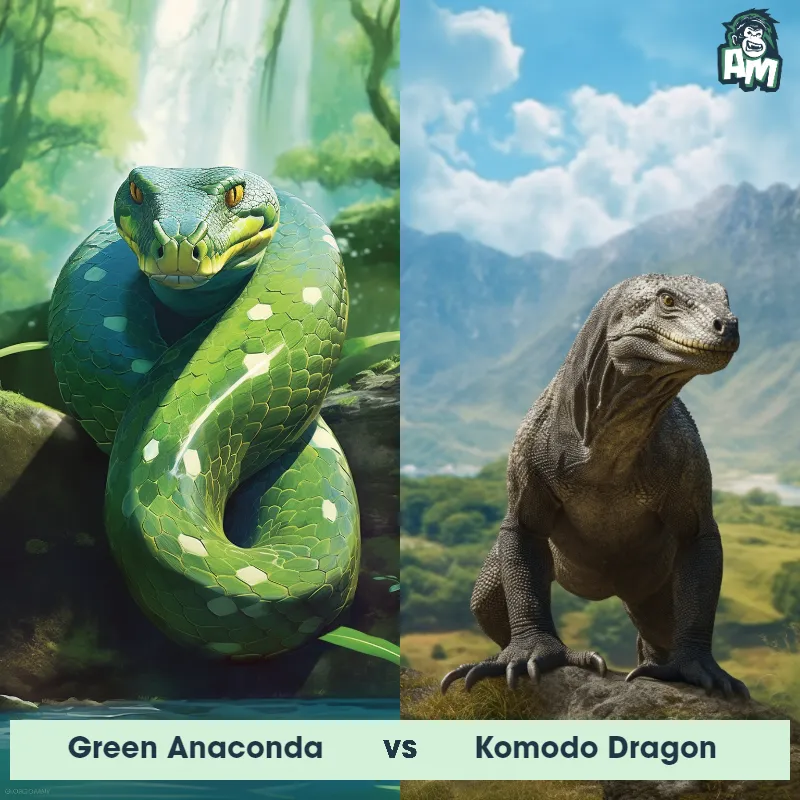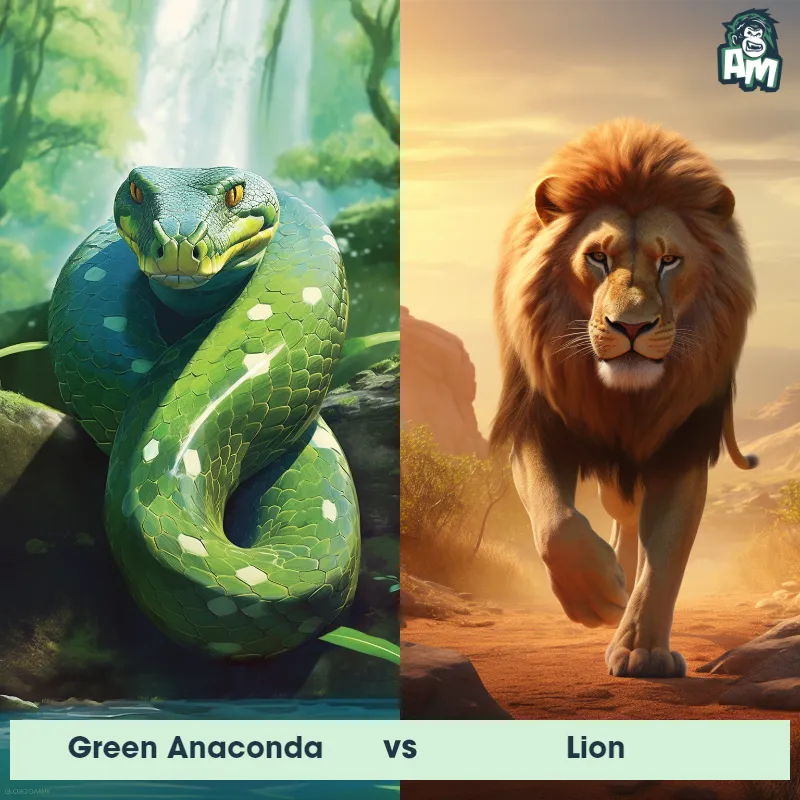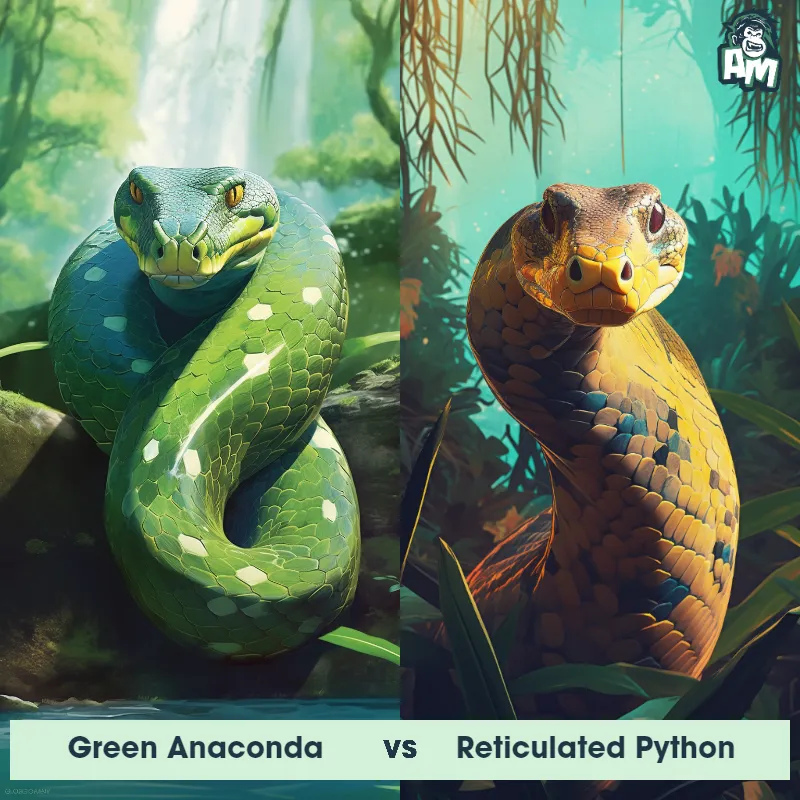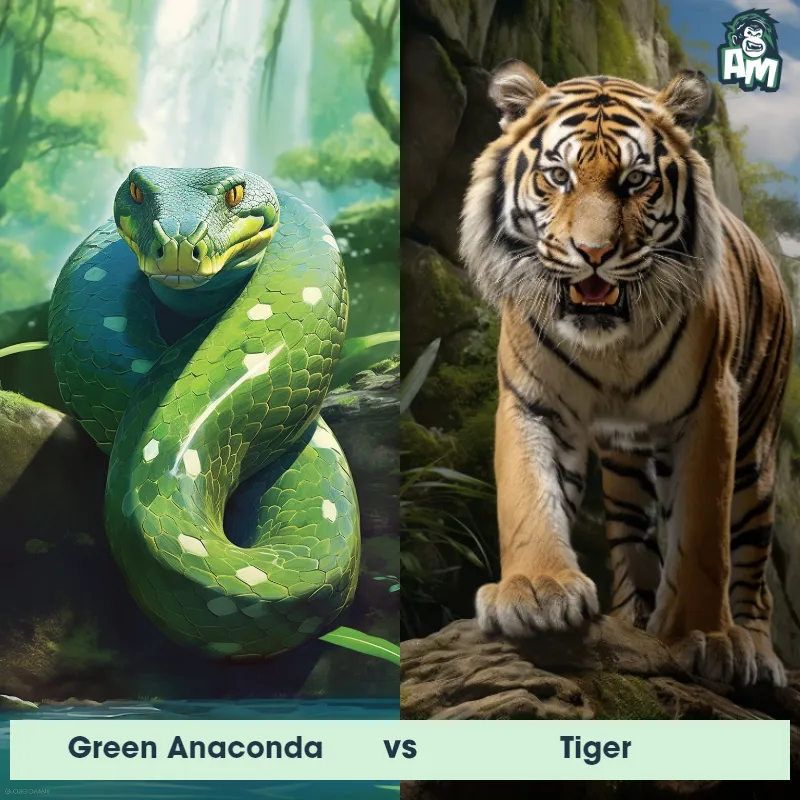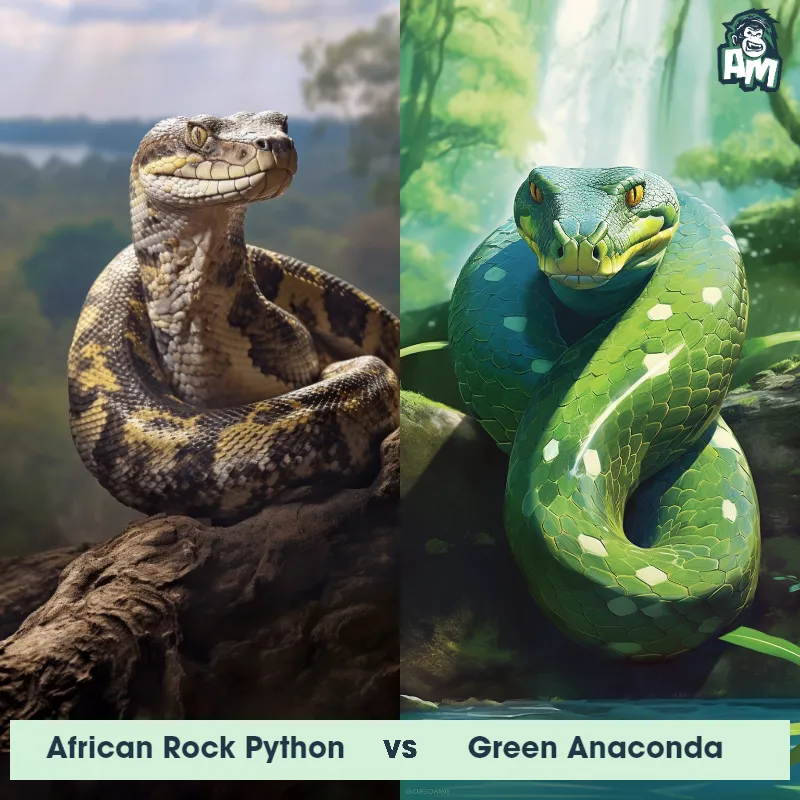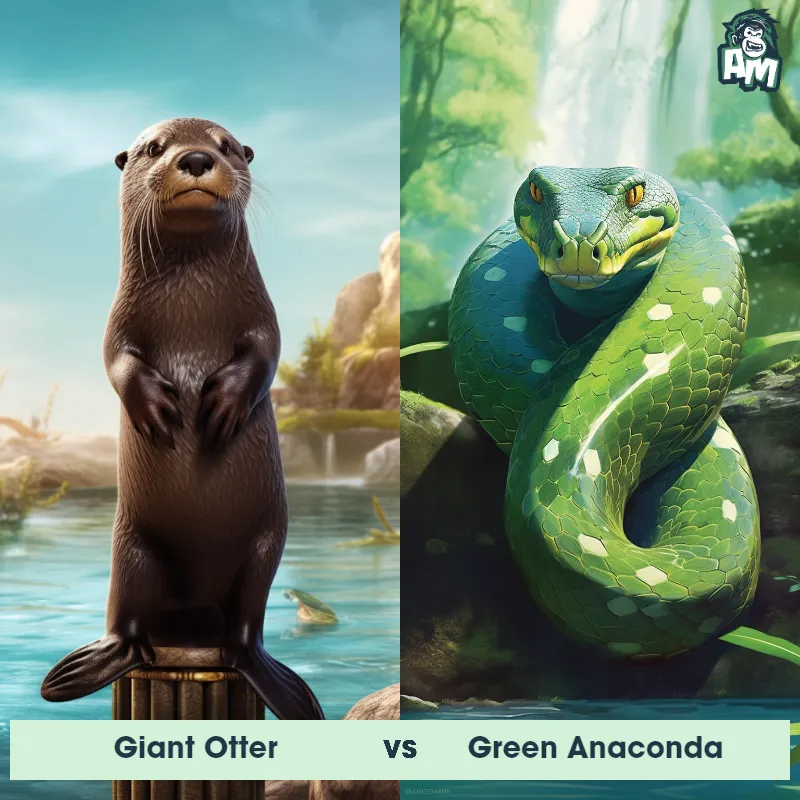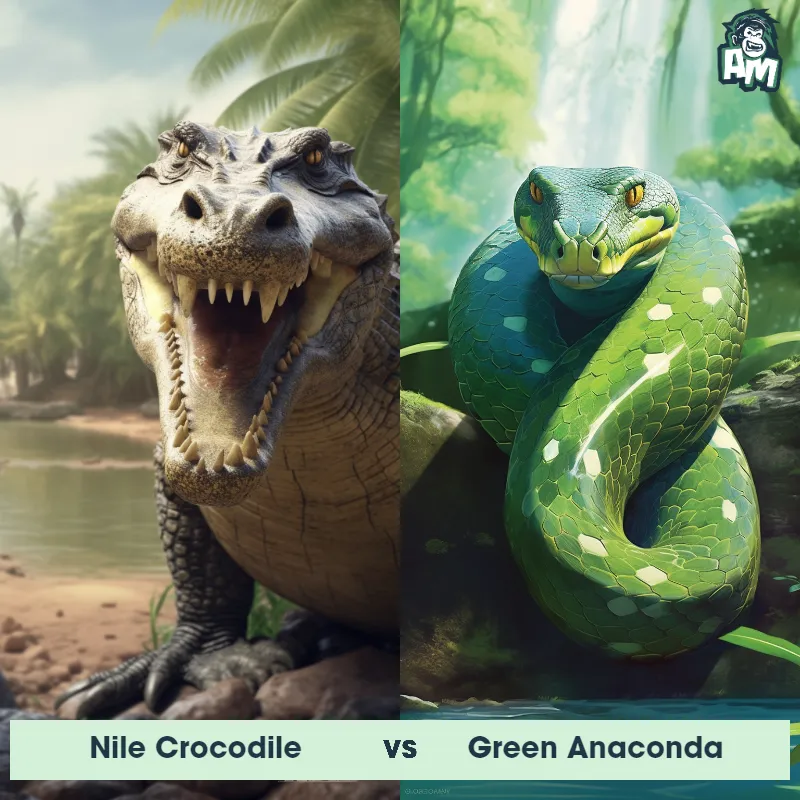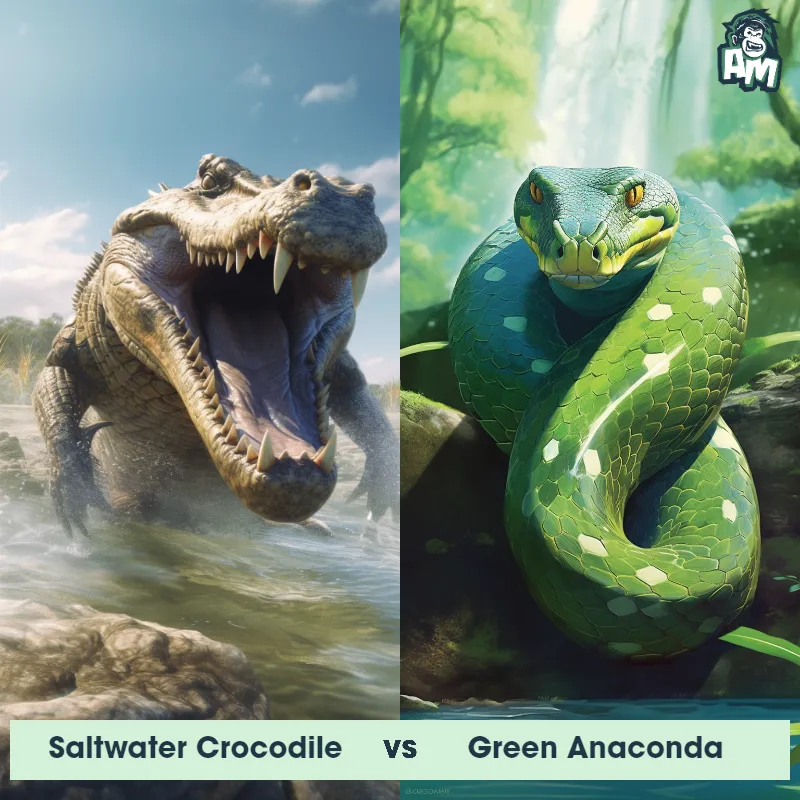The Green Anaconda
The Green Anaconda, also known as the common anaconda, is one of the largest snakes in the world, with females capable of reaching lengths of over 20 feet and weighing more than 200 pounds. They have thick, muscular bodies covered in dark green scales, with black blotches that run along their back. Their eyes and nostrils are positioned on the top of their heads, allowing them to stay partially submerged while still being able to see and breathe. Green Anacondas are nonvenomous constrictor snakes, using their powerful coils to squeeze and suffocate their prey before swallowing it whole. They are mainly found in the swamps, marshes, and slow-moving rivers of South America, where they spend a majority of their time in the water.
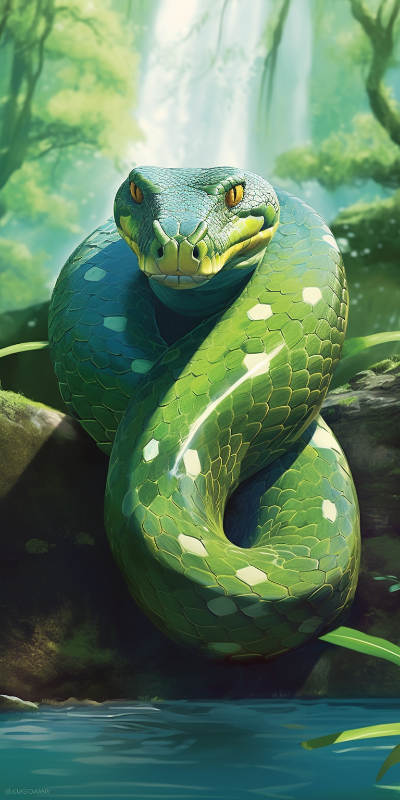
| Green Anaconda | |
|---|---|
| Size | Up to 30 feet (9.1 meters) long |
| Weight | Over 500 pounds (227 kilograms) |
| Speed | Speed: 5 mph (8 km/hr) |
| Key Strength | Powerful constricting muscles |
| Biggest Weakness | Slow movement on land |
| Scientific Name | Eunectes murinus |
| Family | Boidae |
| Habitat | Freshwater rivers, swamps, and marshes |
| Geography | South America |
| Diet | Carnivorous, feeding on a variety of prey including fish, birds, mammals, and reptiles |
| Lifespan | 10 years - 30 years |

The Green Anaconda
The Green Anaconda, also known as the common anaconda, is one of the largest snakes in the world, with females capable of reaching lengths of over 20 feet and weighing more than 200 pounds. They have thick, muscular bodies covered in dark green scales, with black blotches that run along their back. Their eyes and nostrils are positioned on the top of their heads, allowing them to stay partially submerged while still being able to see and breathe. Green Anacondas are nonvenomous constrictor snakes, using their powerful coils to squeeze and suffocate their prey before swallowing it whole. They are mainly found in the swamps, marshes, and slow-moving rivers of South America, where they spend a majority of their time in the water.
Fun Fact: The Green Anaconda has a unique way of catching prey underwater - it can hold its breath for up to 10 minutes!
| Green Anaconda | |
|---|---|
| Size | Up to 30 feet (9.1 meters) long |
| Weight | Over 500 pounds (227 kilograms) |
| Speed | Speed: 5 mph (8 km/hr) |
| Key Strength | Powerful constricting muscles |
| Biggest Weakness | Slow movement on land |
| Scientific Name | Eunectes murinus |
| Family | Boidae |
| Habitat | Freshwater rivers, swamps, and marshes |
| Geography | South America |
| Diet | Carnivorous, feeding on a variety of prey including fish, birds, mammals, and reptiles |
| Lifespan | 10 years - 30 years |
Green Anaconda Matchups
We use AI to simulate matchups between the Green Anaconda and other animals. Our simulation considers size, strength, and natural predatory behaviors to determine the most likely outcome.

Can't find the Matchup you want?
Create Your Own MatchupGreen Anaconda: Diet, Predators, Aggression, and Defensive Behaviors
What do Green Anacondas eat?
Green Anacondas are powerful constrictor snakes that primarily feed on a diet of aquatic animals such as fish, birds, turtles, capybaras, and even caimans and larger mammals like deer. Green Anaconda are known to ambush their prey by lying in wait and then striking with a swift and deadly constriction.
Do Green Anacondas have any predators?
Despite their large size and formidable reputation, Green Anacondas are not invincible and face threats from other apex predators such as jaguars, large caimans, and even humans who hunt them for their skins. While Green Anaconda may not have many natural predators, these threats can pose a challenge to their survival.
Are Green Anacondas aggressive?
Green Anacondas are not typically aggressive towards humans unless provoked or threatened. However, Green Anaconda are solitary and territorial animals that may exhibit defensive behavior if Green Anaconda feel their space is being invaded. It is important to give these snakes their space and respect their natural behaviors.
Do Green Anacondas fight?
Green Anacondas are not known to be particularly aggressive towards each other and tend to avoid confrontation whenever possible. However, territorial disputes or competition for food or mates can lead to physical confrontations between individuals. These interactions may involve wrestling, biting, and coiling around each other in an attempt to assert dominance.
How do Green Anacondas defend themselves?
When threatened, Green Anacondas will often rely on their size, strength, and powerful muscles to defend themselves. Green Anaconda may attempt to intimidate the threat by hissing, opening their mouths wide to show their intimidating teeth, or emitting foul-smelling musk to deter predators. If necessary, Green Anaconda will resort to constricting their attacker to subdue and potentially kill them.
What is the biggest weakness of Green Anacondas in a fight?
Despite their impressive size and strength, one weakness of Green Anacondas in a fight is their vulnerability to sustained injuries and exhaustion. While Green Anaconda are powerful constrictors, prolonged struggles can tire them out and leave them vulnerable to attacks from larger predators or threats. Additionally, their slow metabolism means Green Anaconda require time to recover after a strenuous physical encounter.
Fun Fact: As the heaviest snake species, Green Anacondas have been known to prey on large animals such as jaguars, caimans, and even deer!
Fun Fact: Female Green Anacondas are much larger than males, a phenomenon known as sexual dimorphism. While females can grow to lengths of over 20 feet, males typically reach a maximum size of around 10-13 feet.



